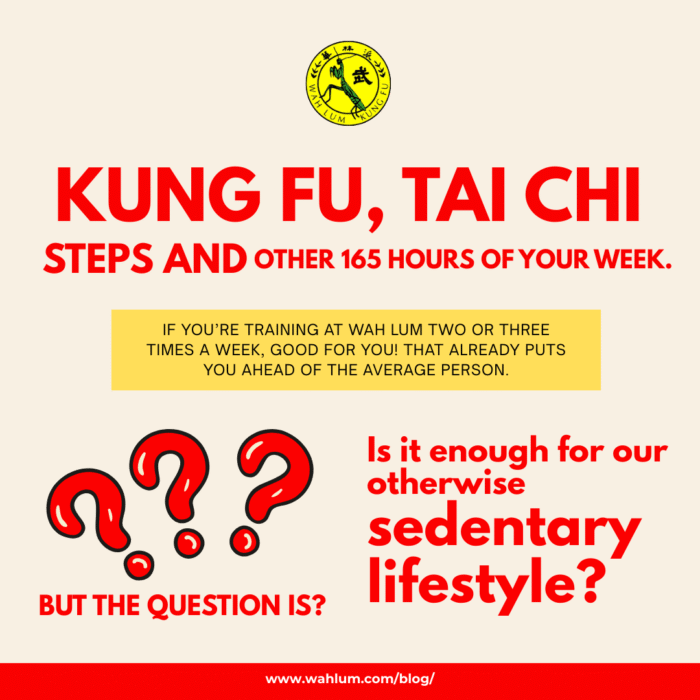Kung Fu, Tai Chi, Steps, and the Other 165 Hours of Your Week
If you’re training at Wah Lum two or three times a week, good for you! That already puts you ahead of the average person. But here’s a question: is it enough for our otherwise sedentary lifestyle?
There are 168 hours in a week. Even with three intense classes, that still leaves 165 hours to fill. What are you doing with the rest of your time?
A few months ago, I read strength coach Dan John’s experience with walking 10,000 steps a day. He credited that simple habit (not an extreme workout plan) with helping him get lean and stay lean. Inspired, I bought a $15 pedometer for a 30-day experiment. I chose an inexpensive one for two reasons:
- Studies suggest basic pedometers can be more accurate than fancy phones.
- I didn’t want to rely on my phone or invest in a high-tech watch for a short trial.
It turns out that walking 10,000 steps is not a new concept. The idea gained popularity in Japan during the lead-up to the 1964 Tokyo Olympics, when a pedometer brand called manpo-kei (literally “10,000 steps meter”) used the number as a catchy marketing tool. While the number wasn’t based on science at the time, modern research shows it’s a pretty good daily target for overall health.
Here’s what I learned from my own trial:
- Hitting 10,000 steps was harder than I thought unless I planned for it.
- Kung Fu and strength training alone didn’t get me there, even if I did both on the same day.
- Yard work easily pushed me past the goal, as did a 45–60 minute walk with my mom on Sundays.
- On most other days, I had to intentionally add movement to hit the target.
One interesting side effect: when I hit 10,000 steps or more, I felt pleasantly tired and wanted to go to bed earlier. That alone felt like a win.
I also realized I didn’t need to wear the pedometer all day. Instead, I put it on only when I was going to move outside of Kung Fu or strength training, such as during walks or yard work. This way, my steps were “true” additional movement, not just my daily total. Even hitting 5,000–8,000 intentional steps this way felt beneficial.
Walking might not sound as exciting as throwing kicks or moving weights around, but it’s a simple, proven way to add more movement to your life. So, the next time you think about your training, remember: it’s not just about the three hours a week you spend at the Temple, it’s about the other 165 hours too.
-Sifu Oscar

